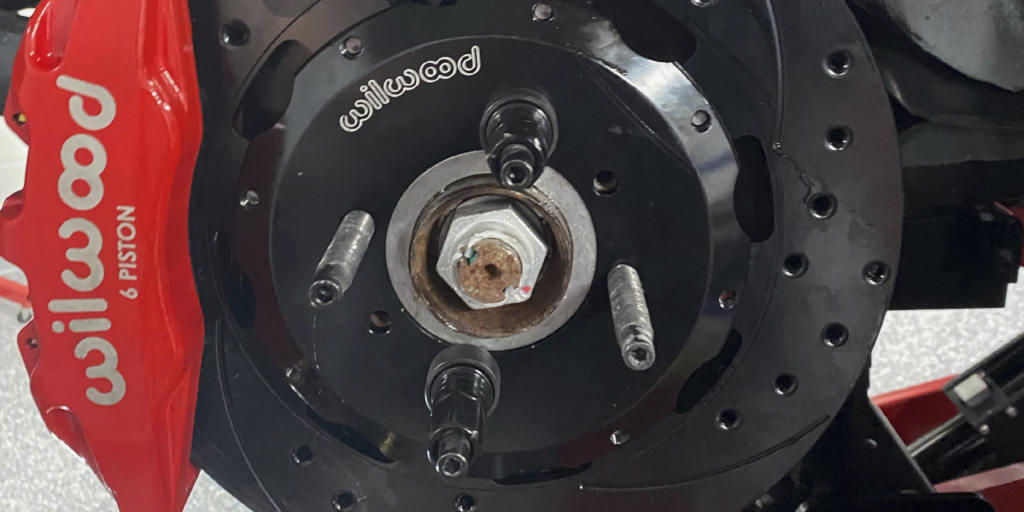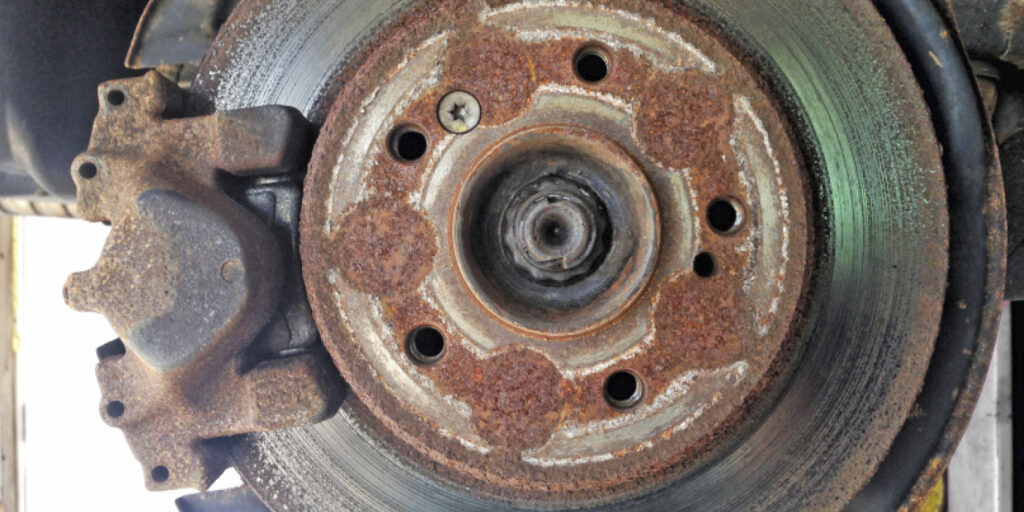Opposed-piston calipers with four or more pistons are becoming more common on middle and upper-level Mercedes, BMW and Land Rover vehicles. With colorful calipers and larger diameter rotors these brake packages look great behind wheel openings. But what are the service implications?
Every technician knows how to service a floating piston caliper but servicing an opposed piston caliper can be a little bit of a mystery.
The amount of clamping force an opposed piston caliper can apply is greater than a single or dual piston floating caliper. Another reason for using multi-piston calipers is to reduce pad flex for better clamping effectiveness and friction. If a caliper has a single, large piston and a relatively short pad, pad flex is usually not an issue. But if a caliper has longer pads (to increase the friction surface area), applying pressure only in the middle of the pad with a single piston may cause the ends of the pads to bow up slightly, with the most force being applied in the middle. To ensure that the full length of the pad contacts the rotor, two or more pistons are used to more evenly distribute the clamping force along the entire length of the pad.
To even out clamping force, some multi-piston performance calipers use different-sized pistons. Some calipers use smaller diameter pistons on the leading edge of the caliper and larger pistons behind it.
Most performance calipers are aluminum rather than cast iron and come powder-coated in a variety of bright colors. Some are also available with a clear anodized coating or are bright plated to resist corrosion and enhance their appearance. Installing a set of brightly colored calipers will certainly dress-up the appearance of any vehicle and enhance the look of the brakes behind alloy wheels.
Most of the aftermarket performance brake kits use fixed calipers. This requires changing the caliper mounts and carefully aligning the calipers to the rotors when they are installed so the pads wear evenly. If a fixed caliper is not perfectly parallel to its rotor, the front and rear edges of the pads will not wear evenly.
While corrosion is typically never an issue with an aluminum caliper, corrosion can occur to the pistons and brake hardware. When inspecting these types of calipers, look at the condition of where the pistons make contact with the pads. To do this you will have to remove the wheel.
When you remove the brake pads, look at the areas where the backing plate makes contact with the caliper body. These areas are the like the abutment slides on a floating caliper. Any damage needs to be addressed. Also, clean any buildup of brake dust or corrosion. Most OEMs recommend lubricating only edges of the pad’s backing plate that make contact with the caliper. Most pads are held in place with pins and anti-rattle clips. These are typically one time use items that should be replaced with the brake pads.
If the piston boots leak or the dust boots are torn the caliper needs to be rebuilt or replaced. Some calipers can be rebuilt at a shop and some remanufactured calipers are available. But often, the most cost-effective method is to use a kit to replace the seals and boots.
Rotors can be another issue. Check the service information to see if the rotor can be resurfaced. Rotors that use a composite structure can’t be resurfaced using a bench or on-the-car brake lathe. On some BMW M-models, the rotors are so large in diameter they will not fit on a conventional lathe.
OTHER UPGRADE CONSIDERATIONS
The larger the rotors, the more brake torque they can generate when the brakes are applied. Up front, that’s a good feature to have. But in the rear, too much brake torque can upset the vehicle’s brake bias and cause the rear brakes to feel grabby and lock up prematurely. The fix is to either use a properly sized rear rotor, or to install an adjustable valve in the rear brake line(s) to reduce the pressure so the rear brakes don’t exert too much pressure when the brakes are applied.
Stopping is a safety concern, of course, but can also be a style issue. Today’s multi-piston calipers and performance brake components can give your customers the best of both worlds.
















